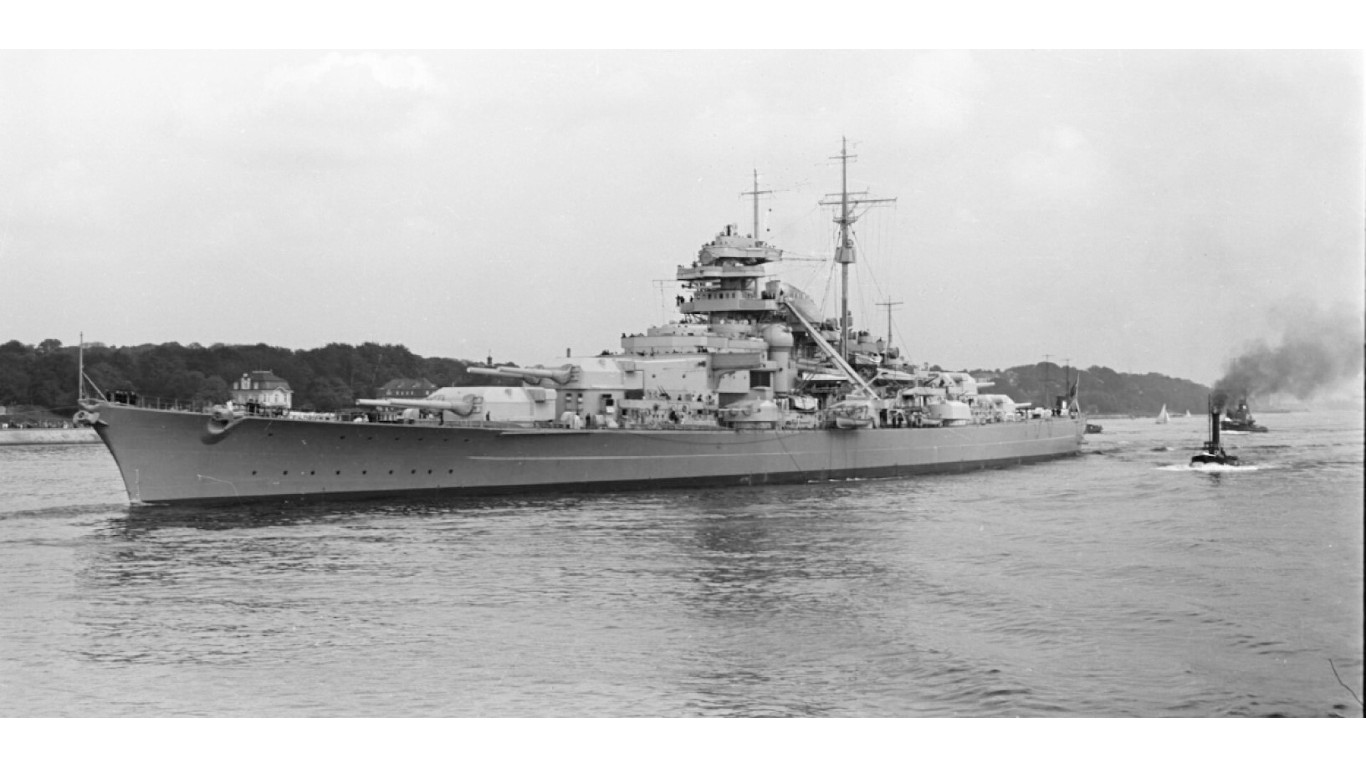
For decades, the battleship was the symbol of a nation’s naval might. These vessels were hundreds of feet long, displaced tens of thousands of tons, bristled with massive guns, and were sheathed with the thickest armor. Within the battleship class, some were larger than others.
The modern armored ship dates from the ironclad warships of the Civil War era. The United States flexed its maritime muscle in 1907-1909, when President Theodore Roosevelt sent the so-called Great White Fleet of 16 American battleships around the world. It was the largest and most powerful flotilla to ever circle the globe. (Today, these are the largest navies in the world.)
Starting in the late 19th century, the British and German empires were locked in a naval arms race that culminated in 1916 with the inconclusive Battle of Jutland during World War I (one of the biggest naval battles of all time).
In the aftermath of that war, the world’s most powerful nations tried to limit the size of fleets, restricting capital ships (battleships and battlecruisers) and battleships to exceed a displacement of 35,000 tons and guns with no more than a 16-inch caliber.
Following violations of the treaty by the French, Italians, and Japanese in the mid-1930s, it was allowed to lapse in 1936, and battleships reached their zenith during World War II – with legendary ships such as Germany’s pair of Bismarck-class vessels and Japan’s two titanic 71,659-ton Yamato-class ships, the largest battleships ever constructed by far.
The battleship eventually surrendered its naval preeminence to aircraft carriers and amphibious warships after World War II. The United Kingdom’s HMS Vanguard, commissioned in 1946, was the last battleship ever built by any nation.
24/7 Tempo consulted sources including Navy General Board, Largest.org, Militaryfactory, Militarymachine, and PearlHarbor to compile a list of the biggest battleships in history, using displacement tonnage as a measure. Note that with three exceptions, the list is ordered not by individual ship but by battleship class, each class including two or more ships with different names. The exceptions are the U.K.’s HMS Agincourt, HMS Hood, and HMS Vanguard.
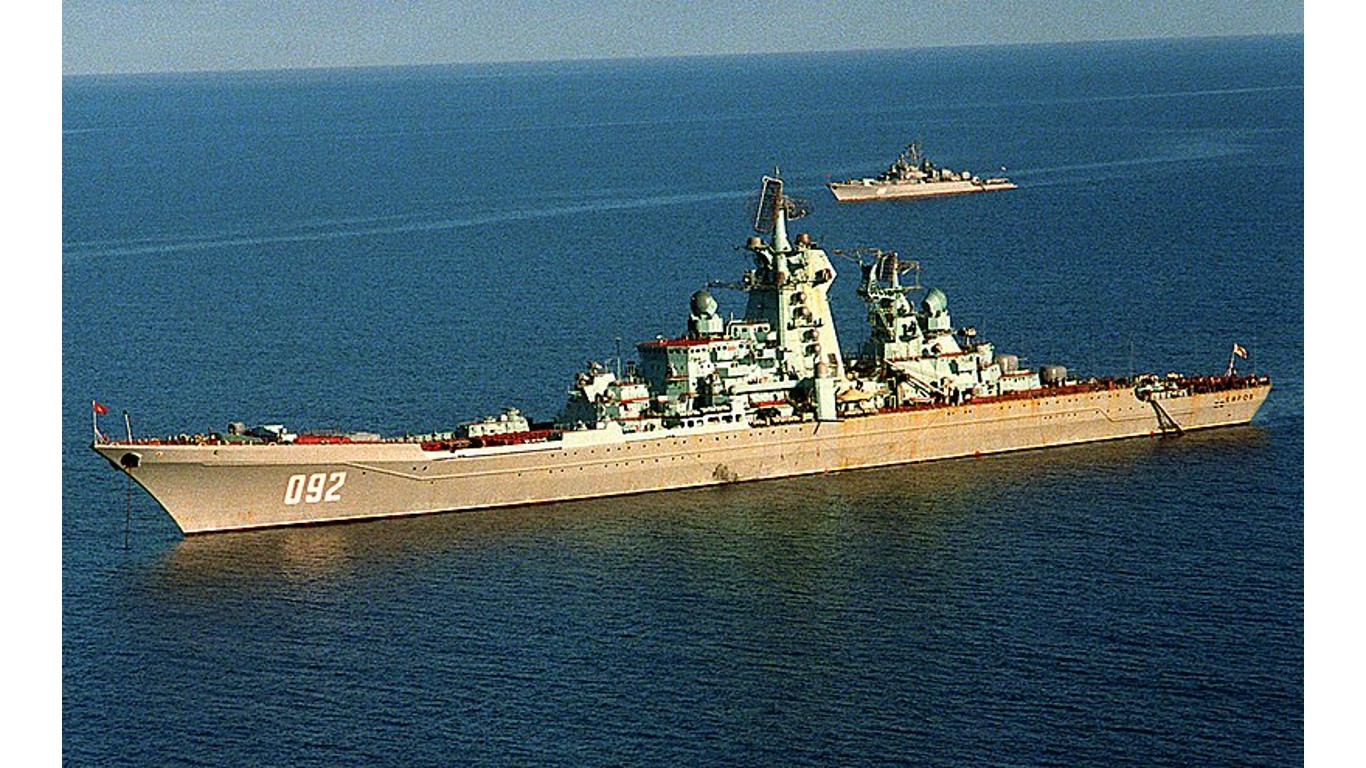
28. Kirov Class
> Tonnage: 25,000
> Country: Russia
> Commissioned: 1980
[in-text-ad]
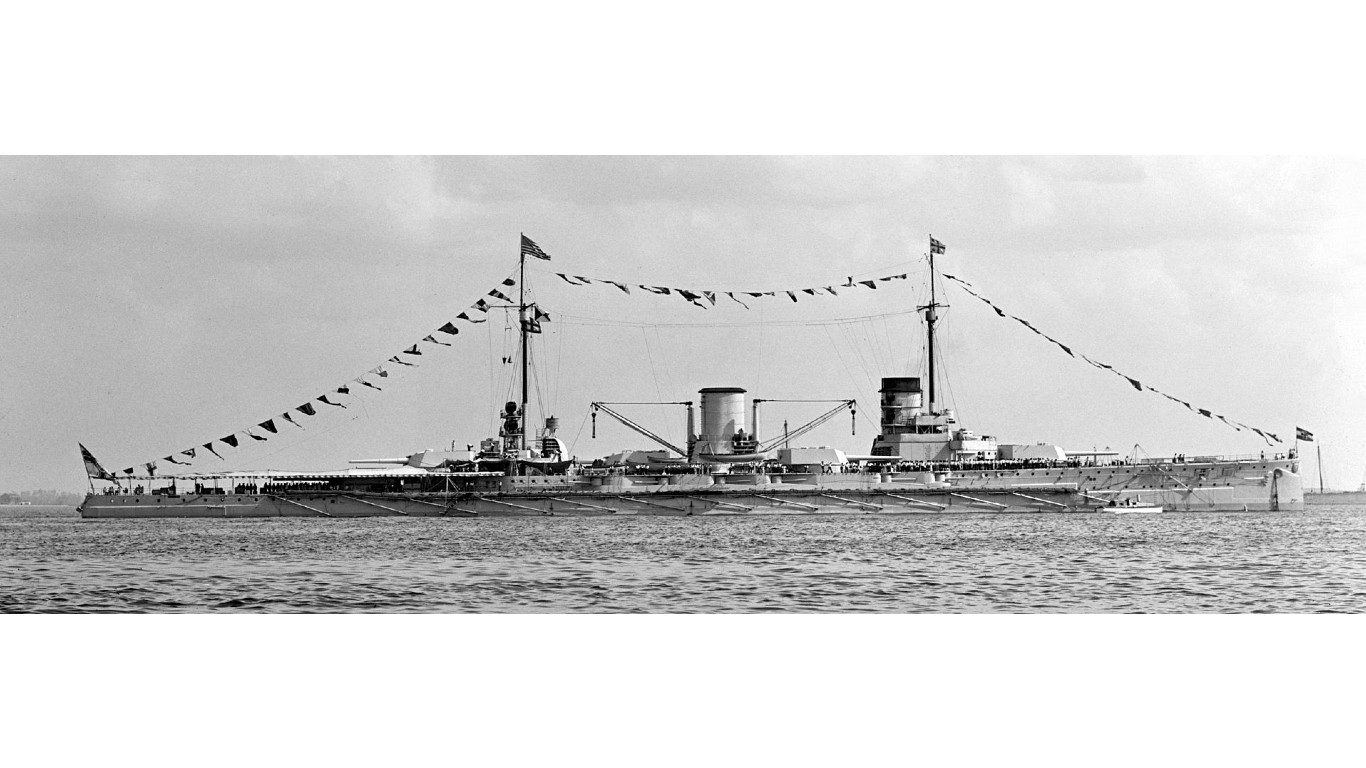
27. Moltke Class
> Tonnage: 25,400
> Country: Germany
> Commissioned: 1911
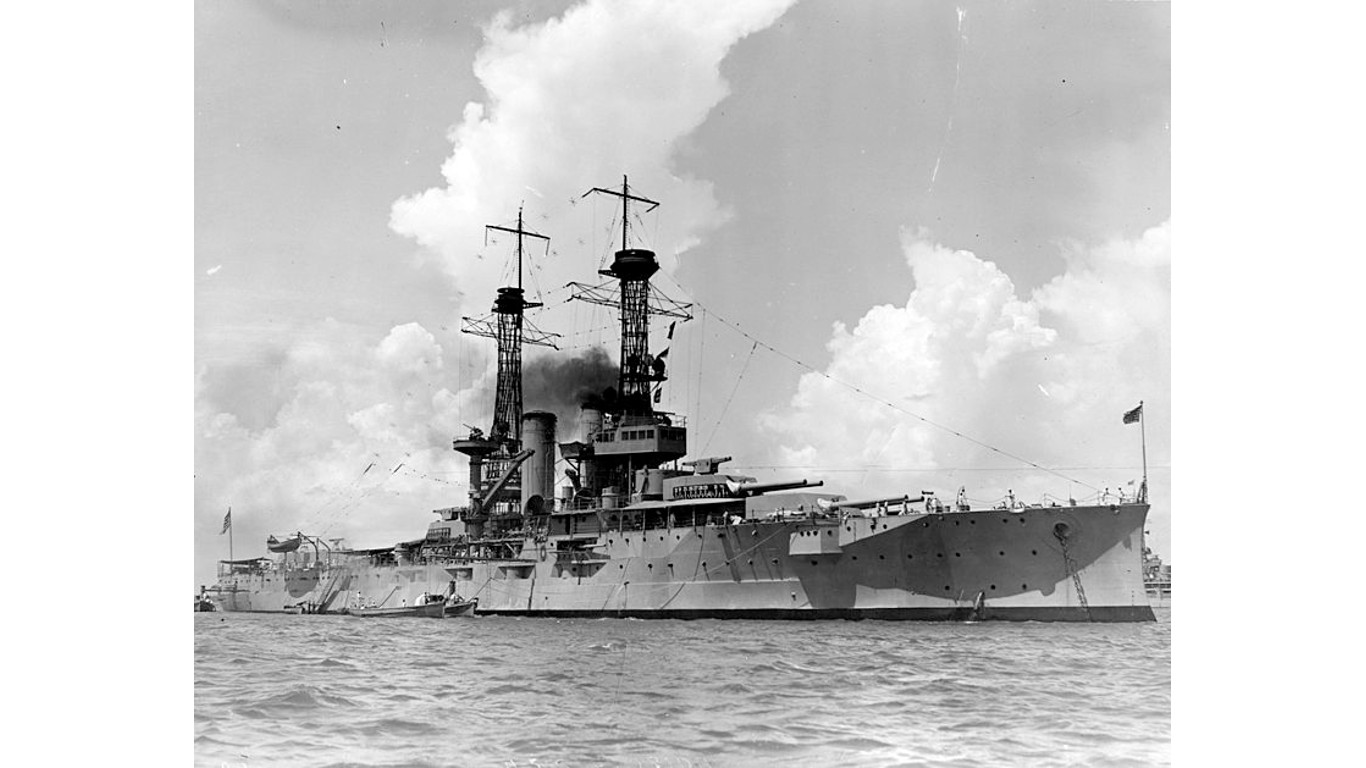
26. Florida Class
> Tonnage: 25,400
> Country: United States
> Commissioned: 1911
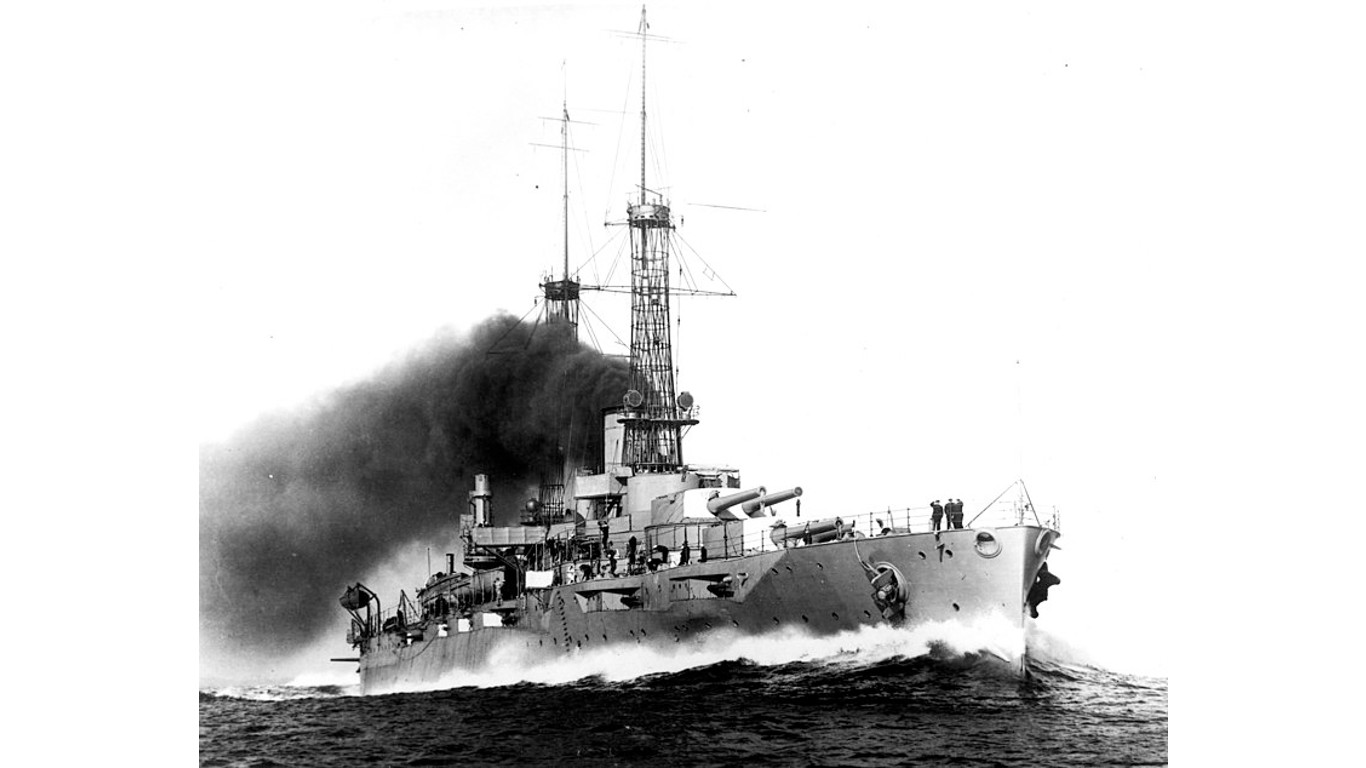
25. New York Class
> Tonnage: 27,435
> Country: United States
> Commissioned: 1914
[in-text-ad-2]
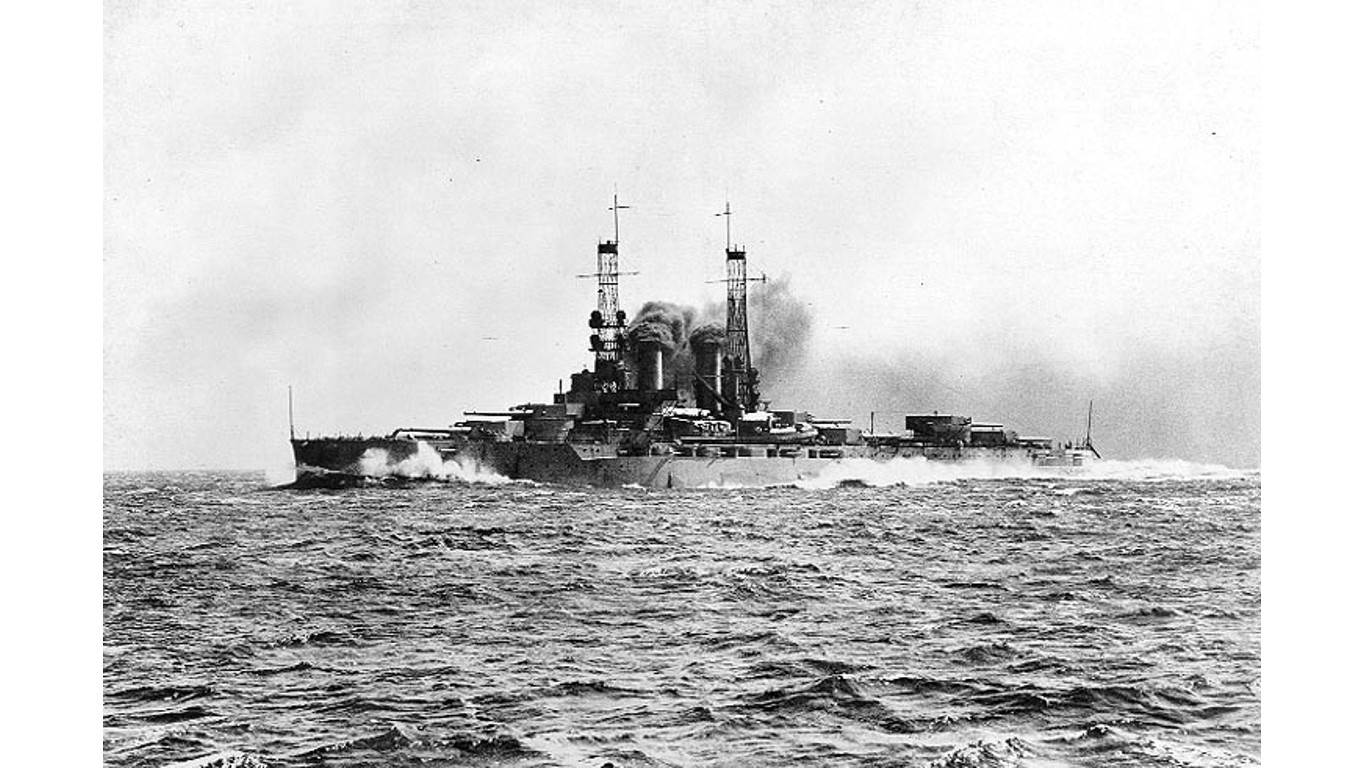
24. Wyoming Class
> Tonnage: 27,680
> Country: United States
> Commissioned: 1912
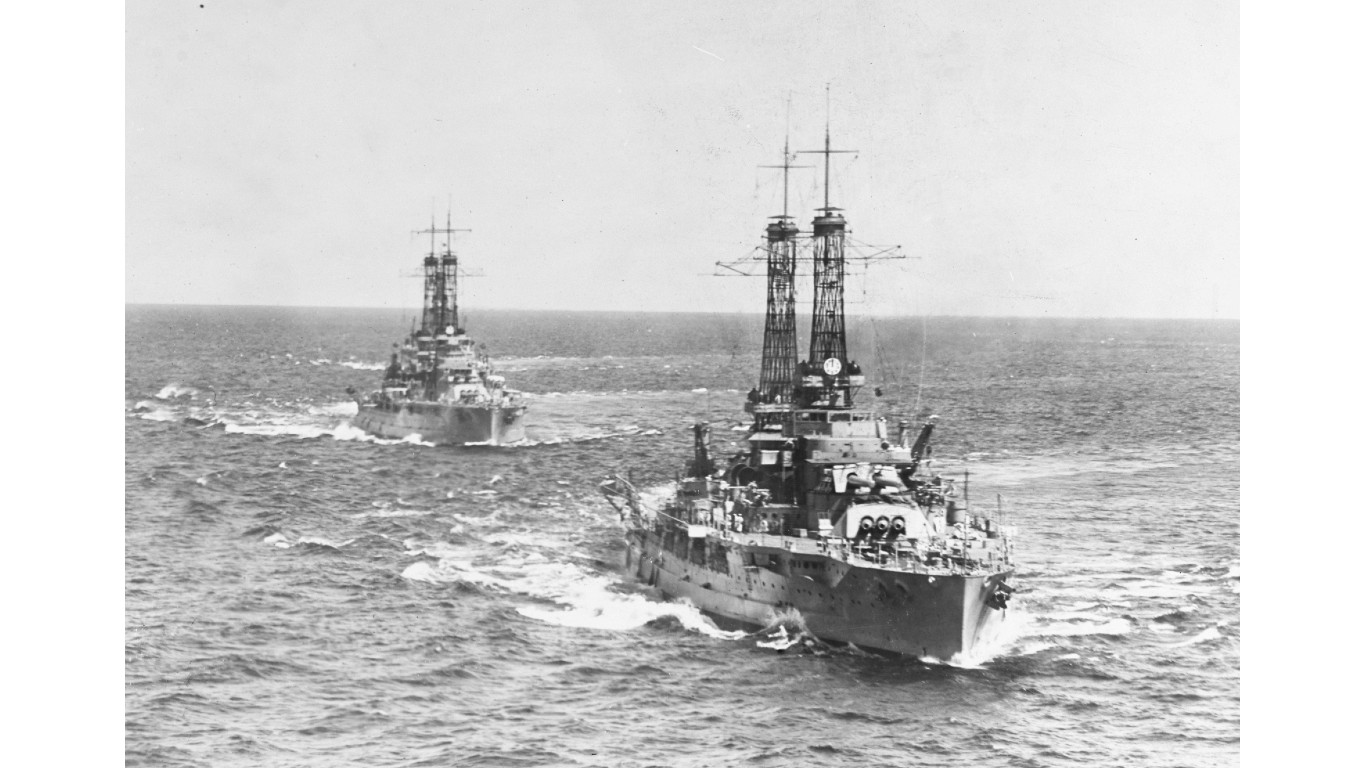
23. Nevada Class
> Tonnage: 29,000
> Country: United States
> Commissioned: 1916
[in-text-ad]
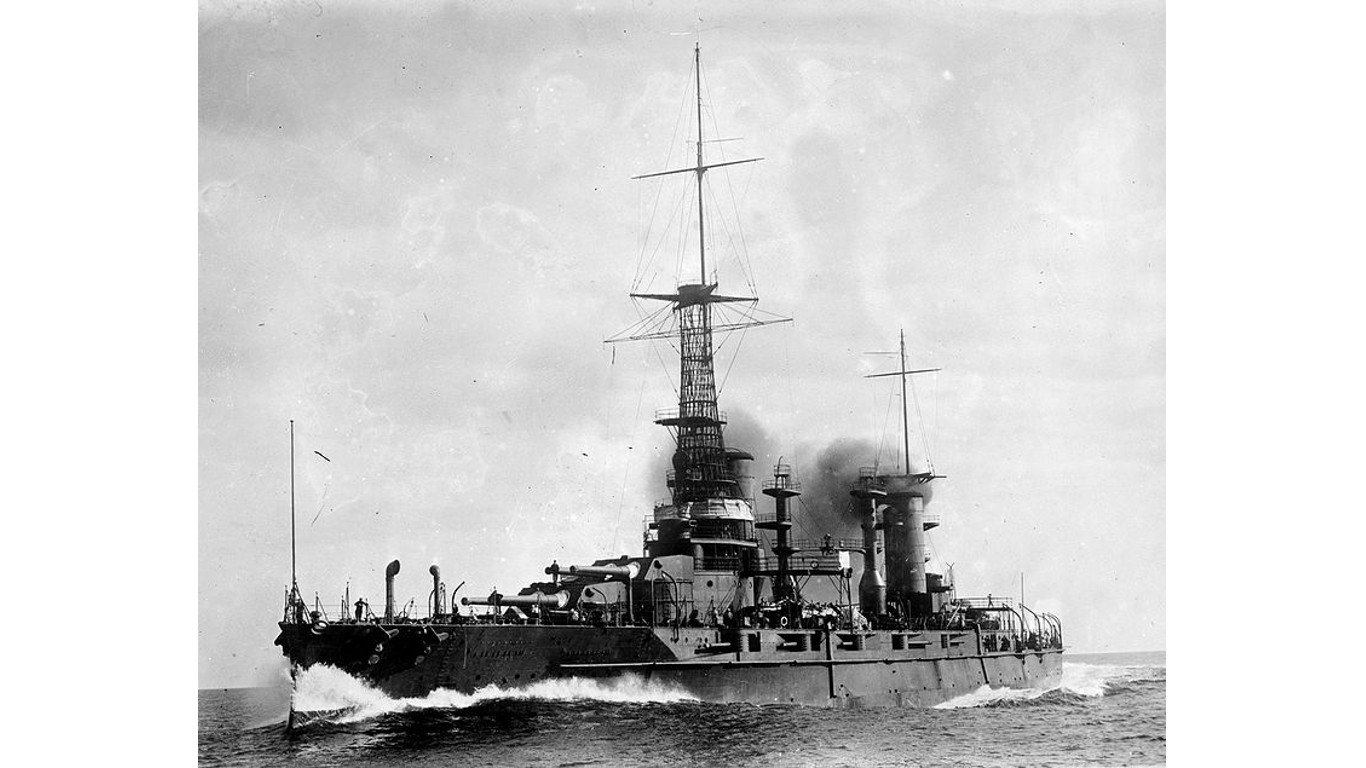
22. Rivadavia Class
> Tonnage: 30,600
> Country: Argentina
> Commissioned: 1915
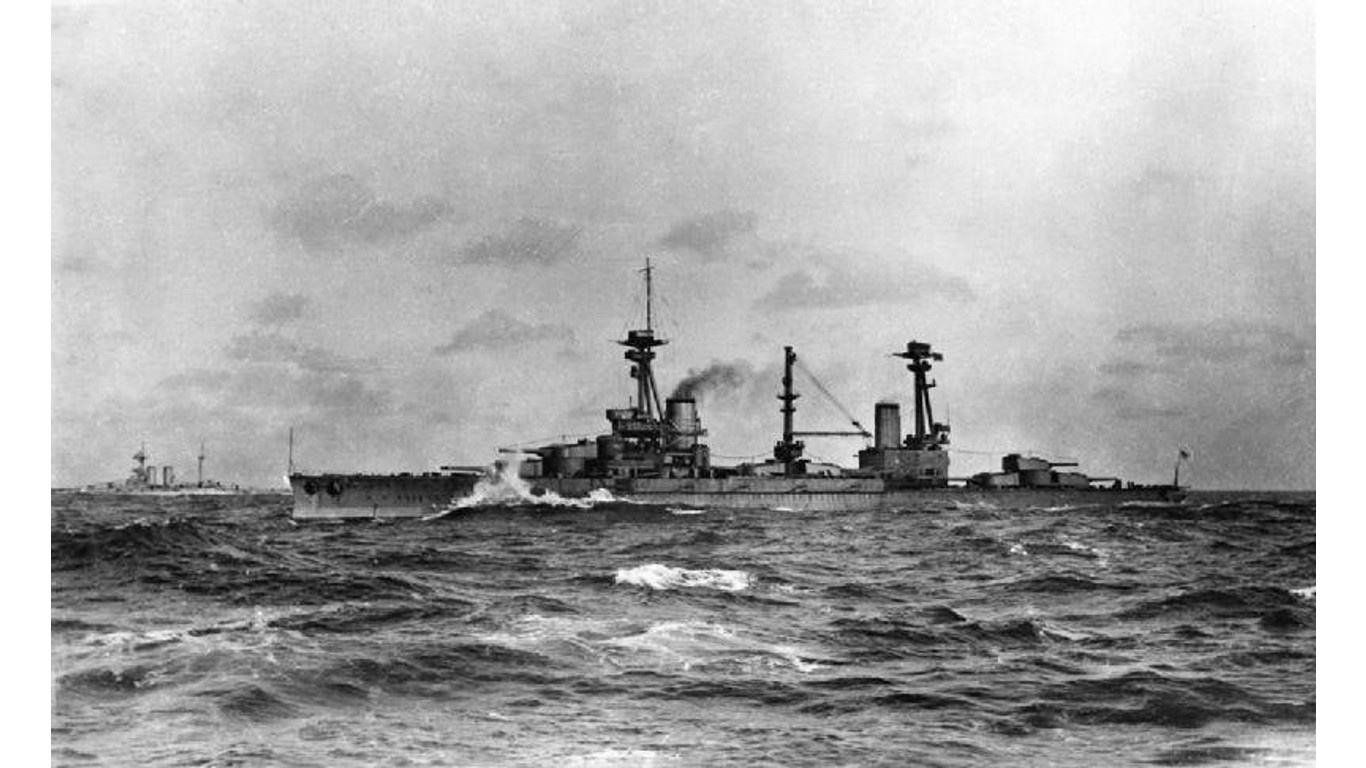
21. HMS Agincourt Dreadnought
> Tonnage: 31,360
> Country: United Kingdom
> Commissioned: 1914
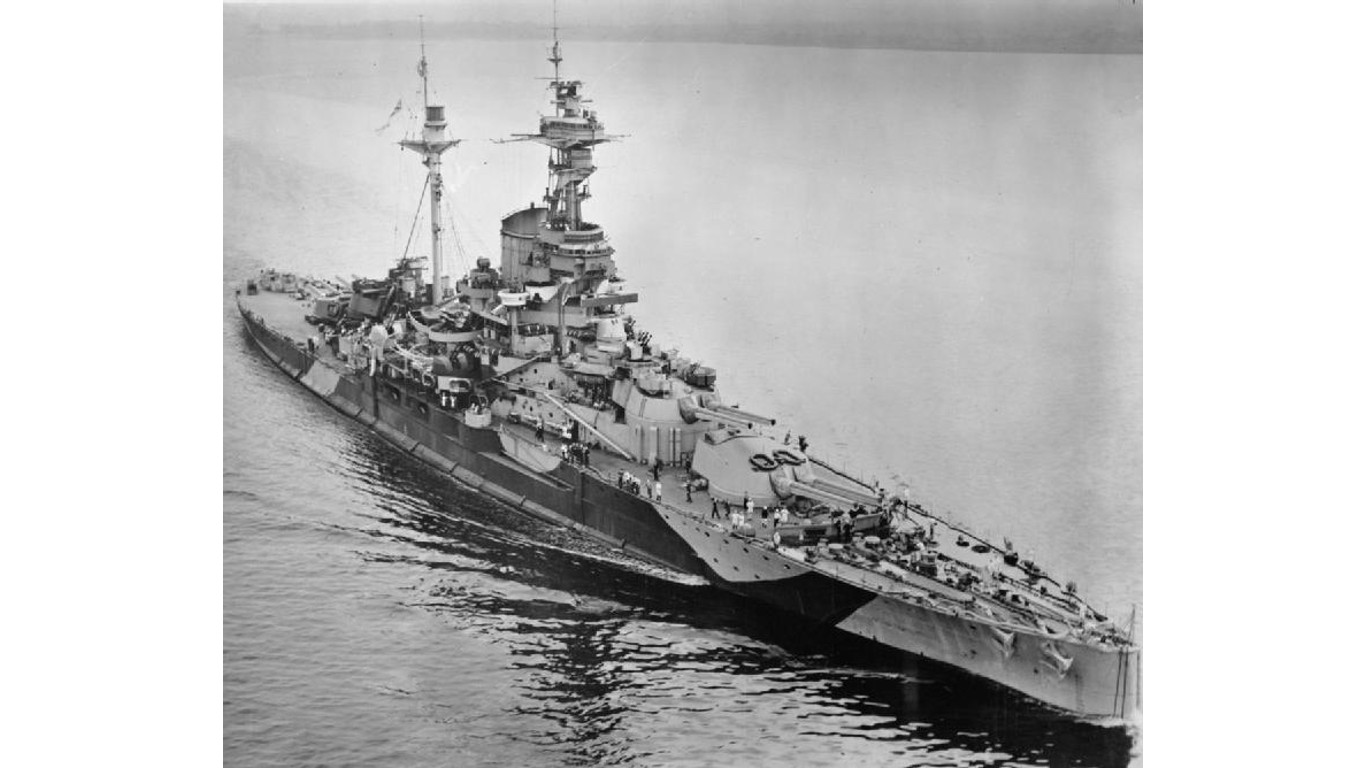
20. Revenge Class
> Tonnage: 31,630
> Country: United Kingdom
> Commissioned: 1916
[in-text-ad-2]
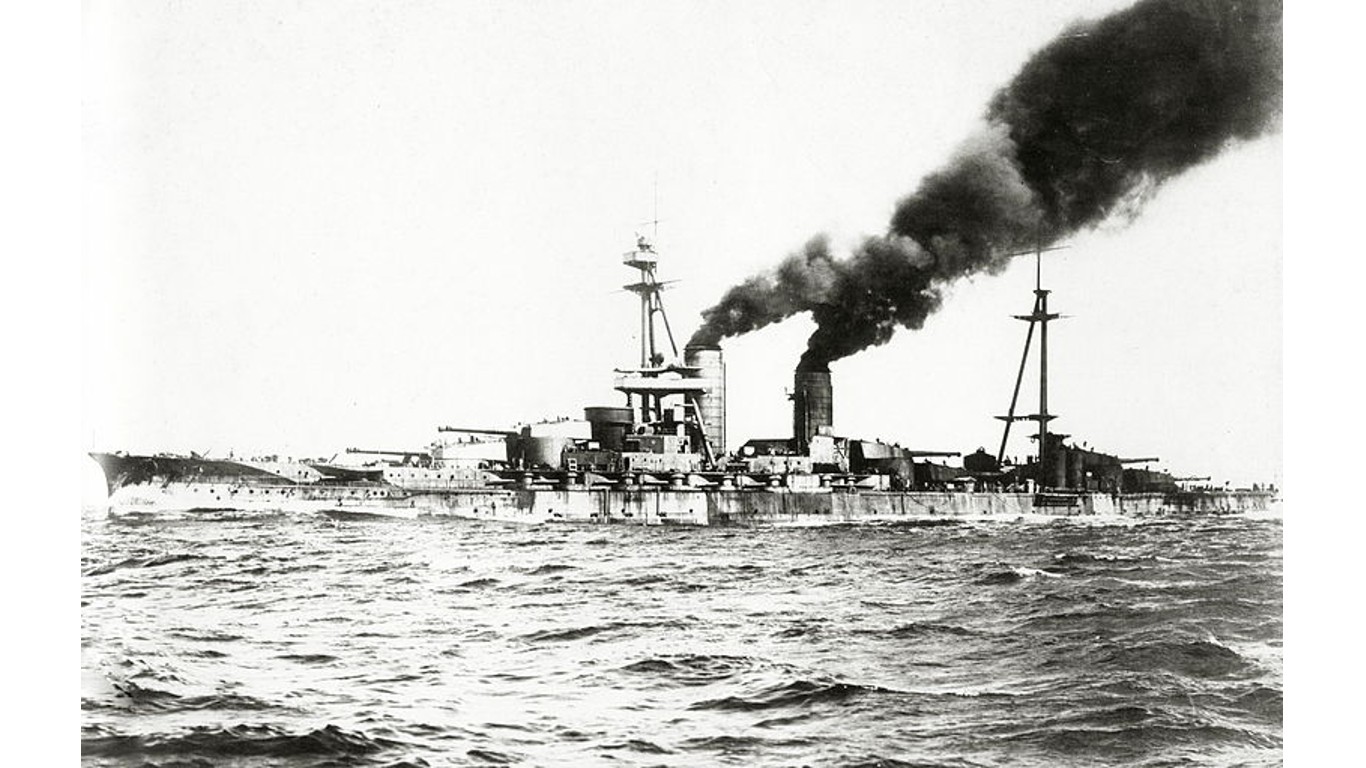
19. Ise Class
> Tonnage: 31,760
> Country: Japan
> Commissioned: 1917
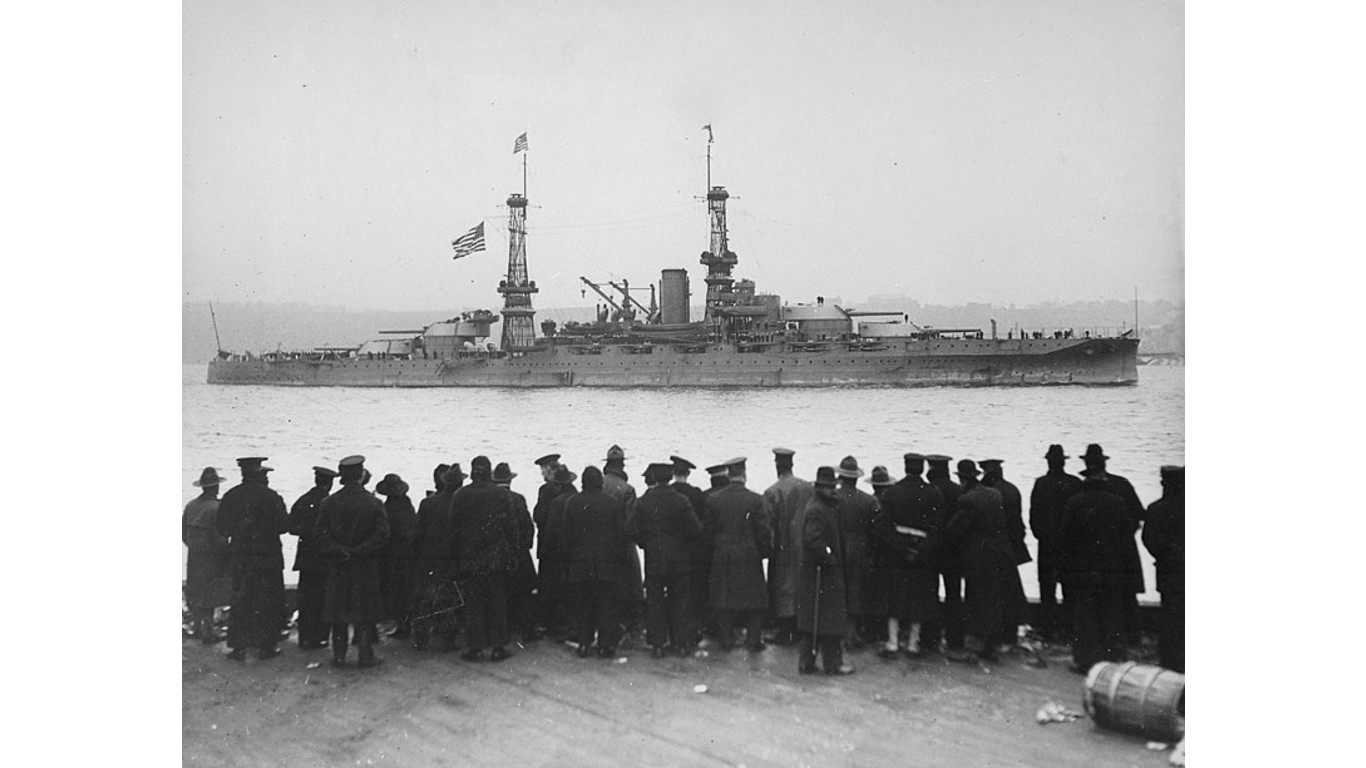
18. Pennsylvania Class
> Tonnage: 32,429
> Country: United States
> Commissioned: 1916
[in-text-ad]
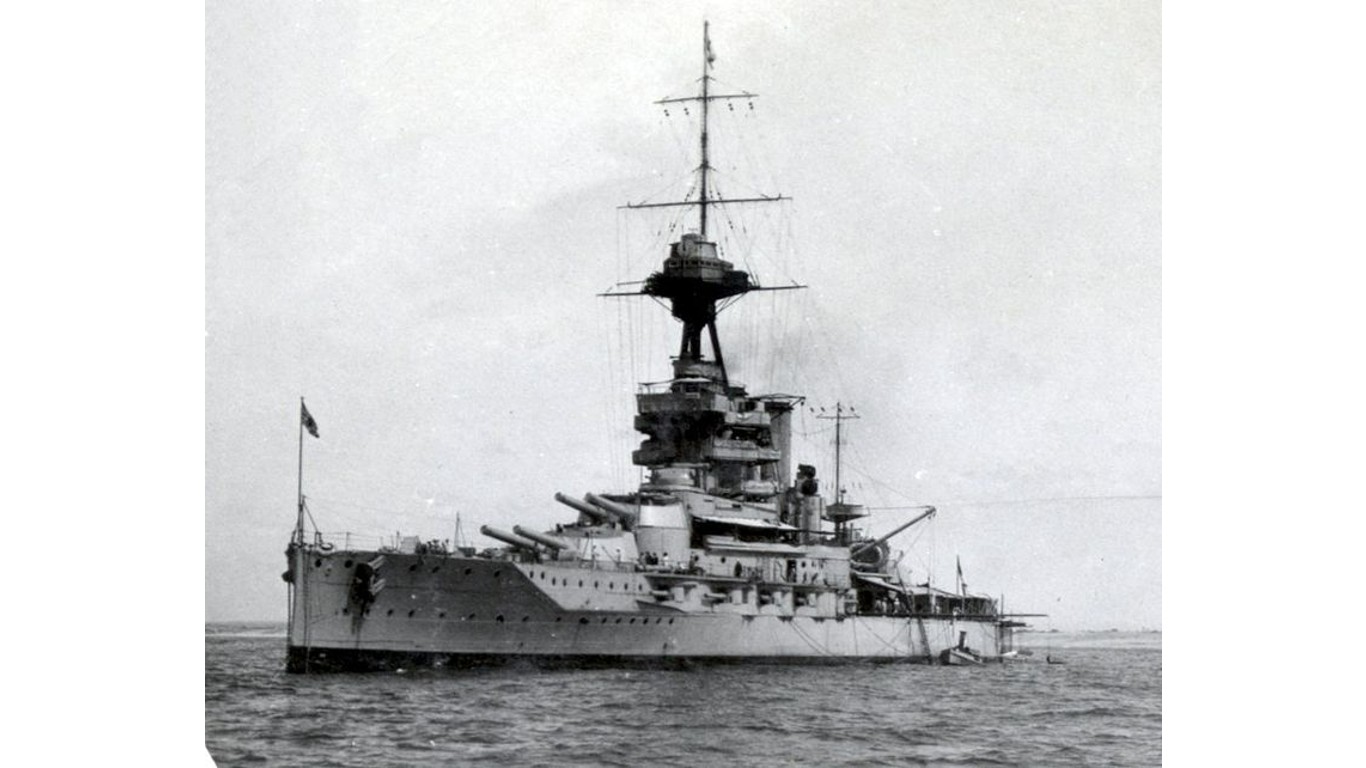
17. Iron Duke Super Dreadnought Class
> Tonnage: 32,635
> Country: United Kingdom
> Commissioned: 1915
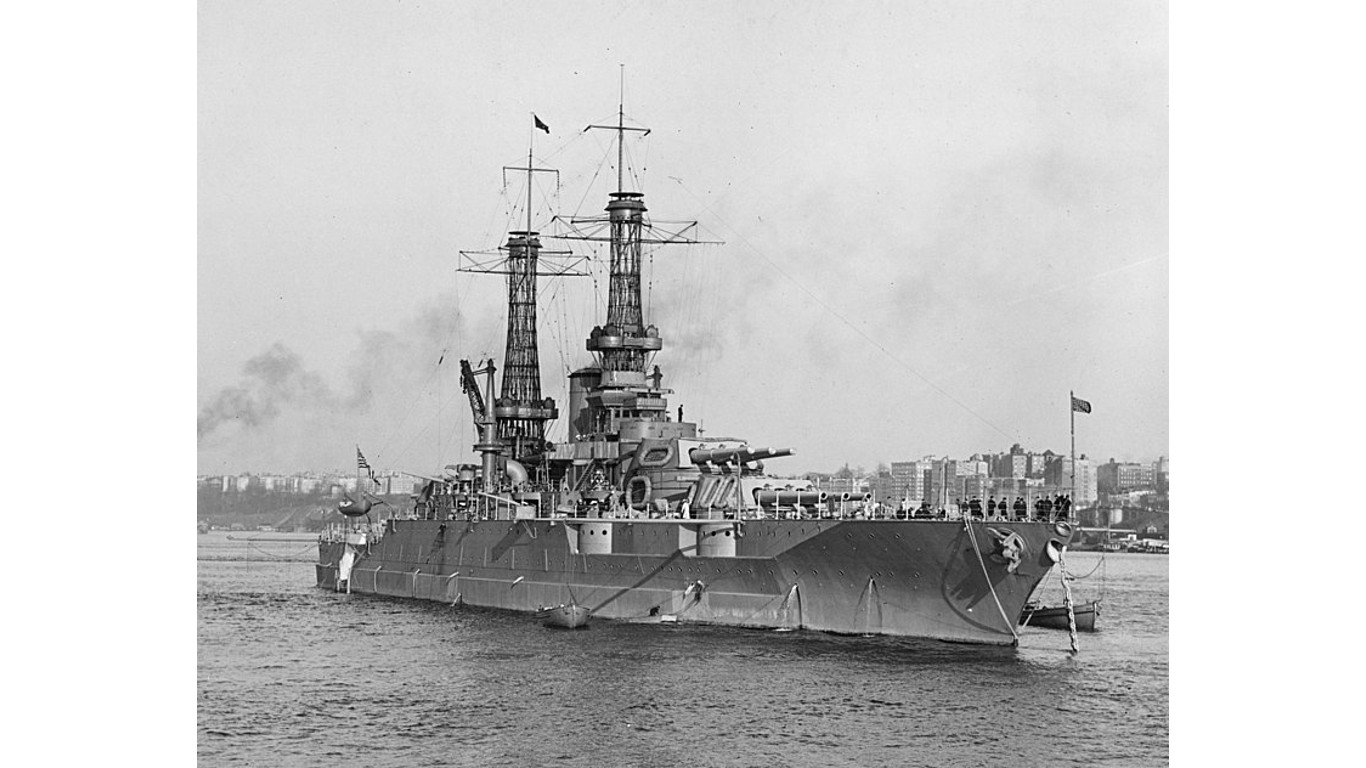
16. New Mexico Class
> Tonnage: 33,350
> Country: United States
> Commissioned: 1918
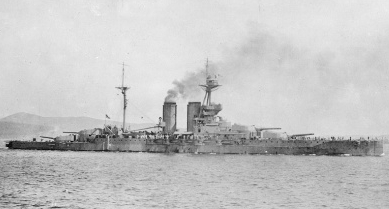
15. Queen Elizabeth Class Super Dreadnought
> Tonnage: 33,790
> Country: United Kingdom
> Commissioned: 1915
[in-text-ad-2]
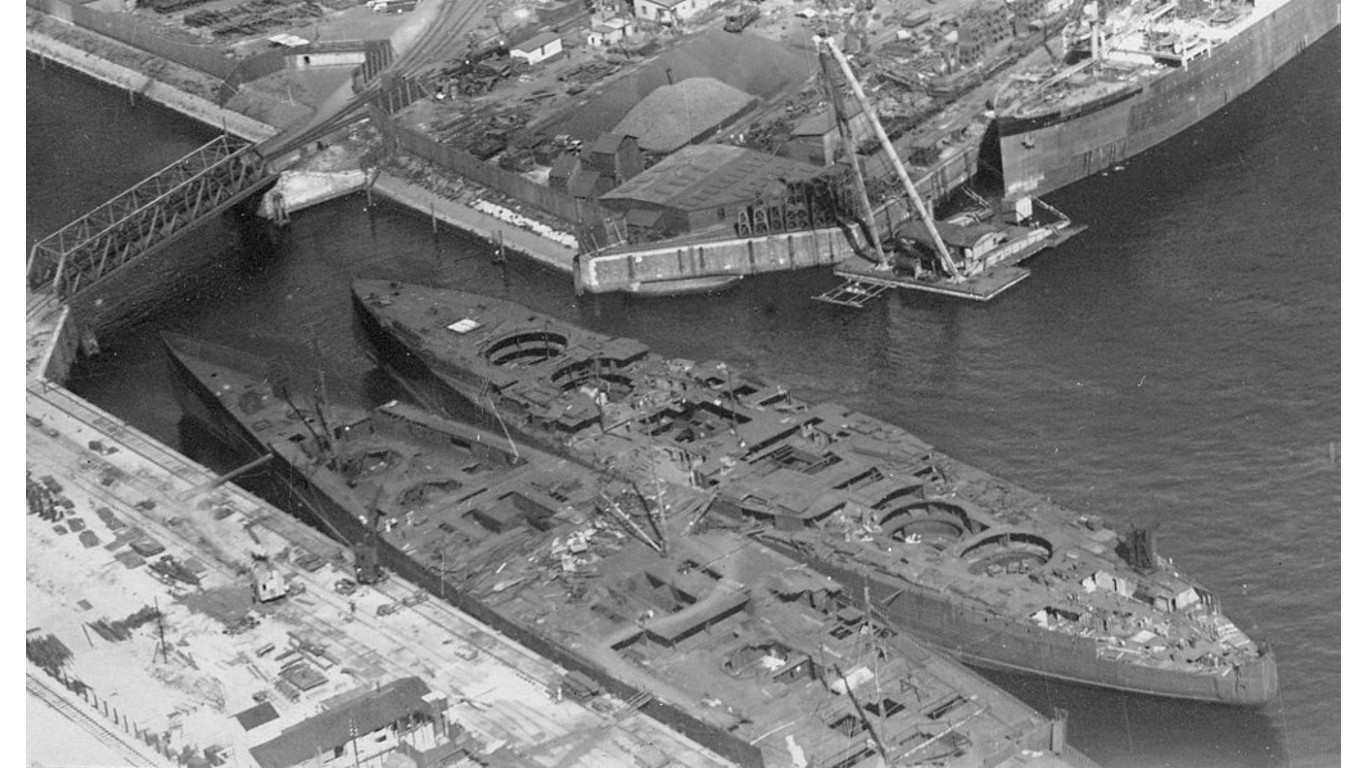
14. Bayern Class
> Tonnage: 35,500
> Country: Germany
> Commissioned: 1917
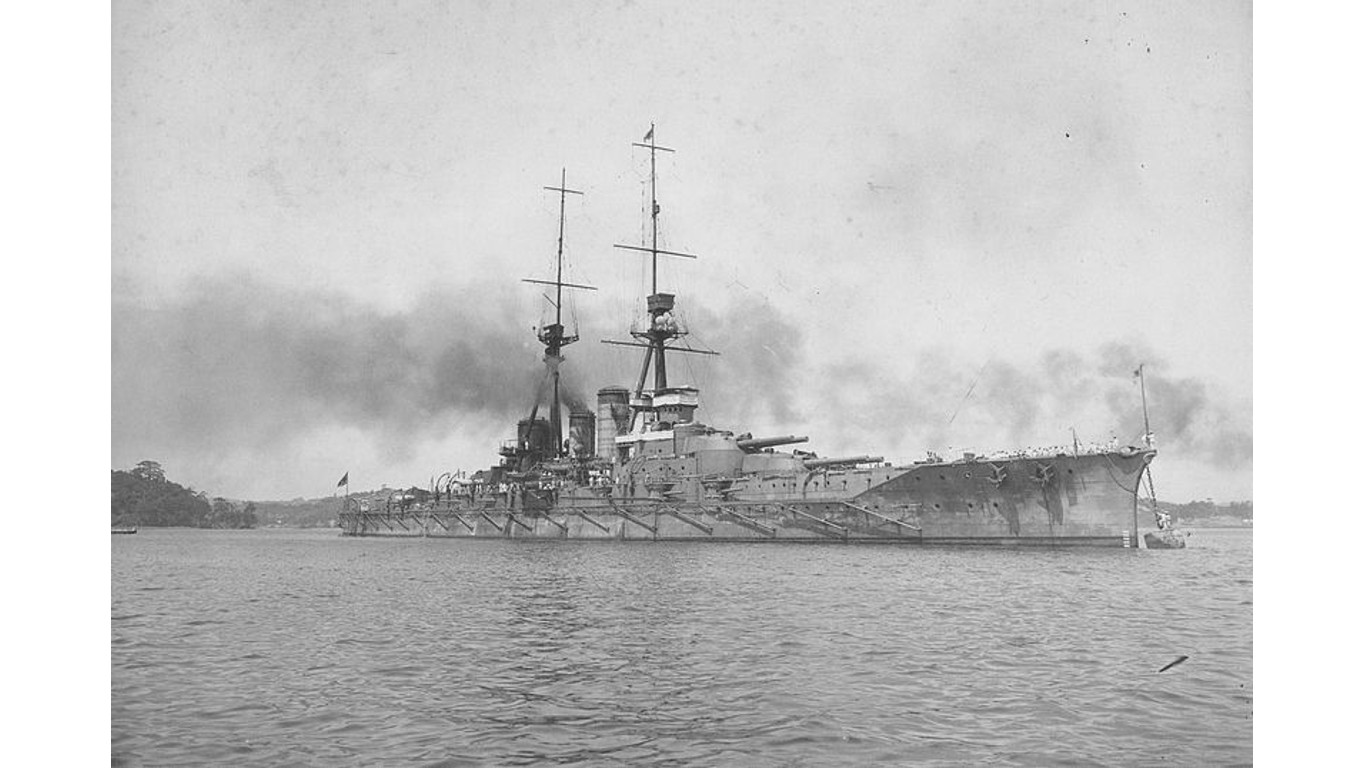
13. Kongō Class Battlecruiser
> Tonnage: 36,500
> Country: Japan
> Commissioned: 1913
[in-text-ad]
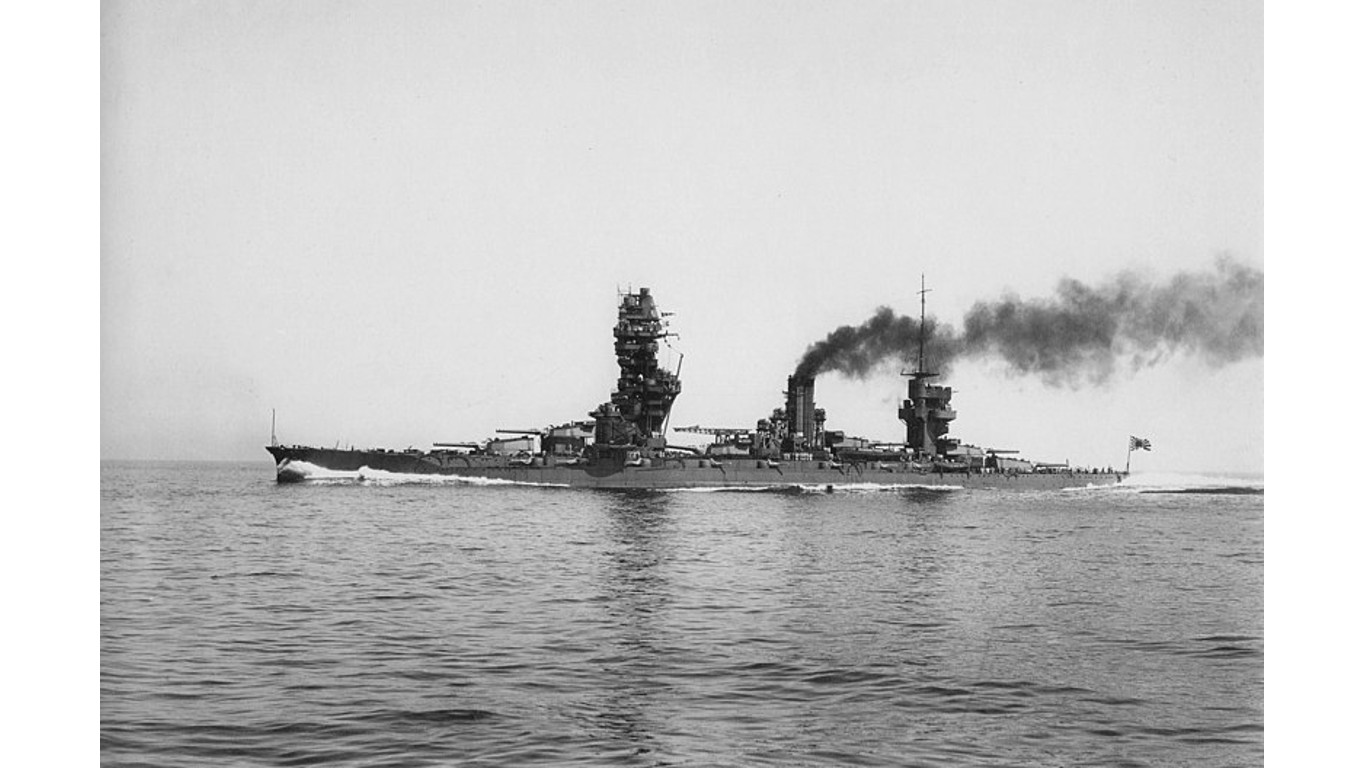
12. Fusō Dreadnought Class
> Tonnage: 37,187
> Country: Japan
> Commissioned: 1915
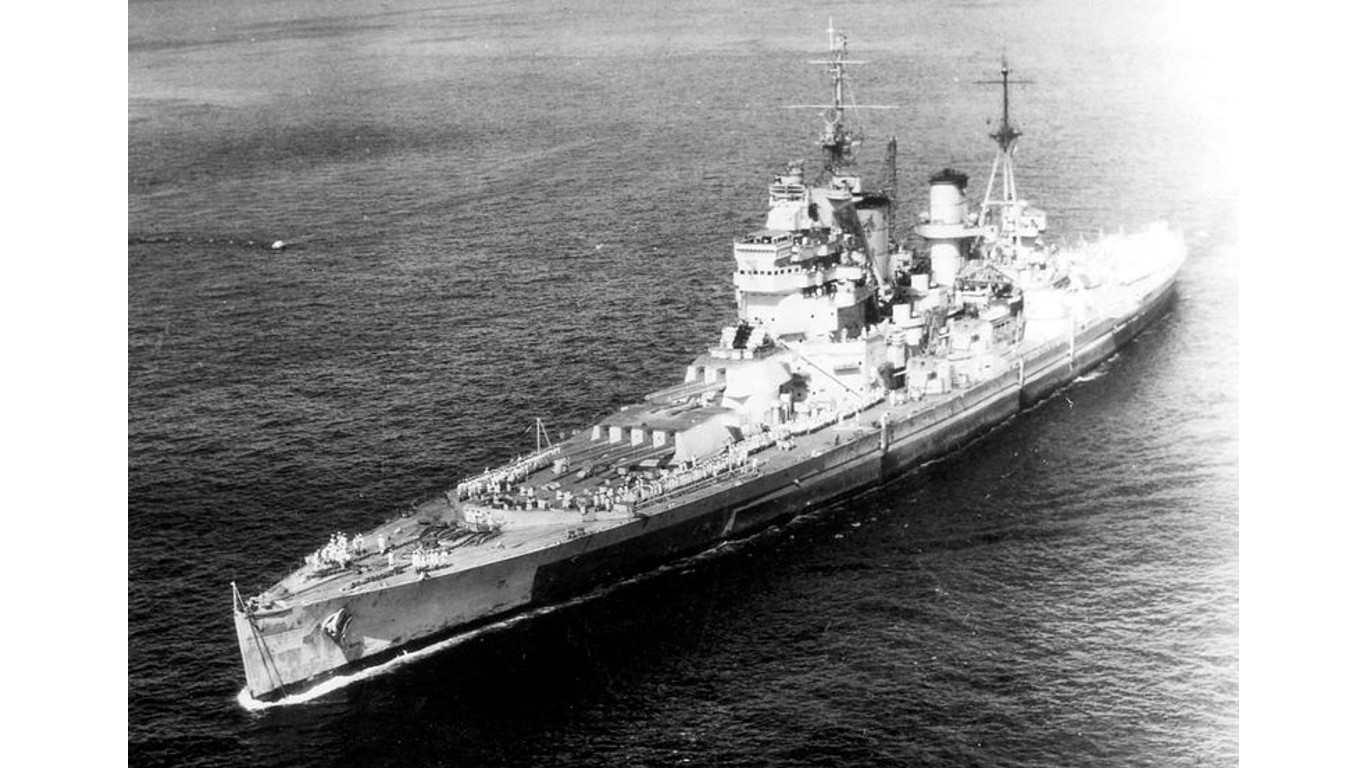
11. King George V Class
> Tonnage: 45,360
> Country: United Kingdom
> Commissioned: 1942
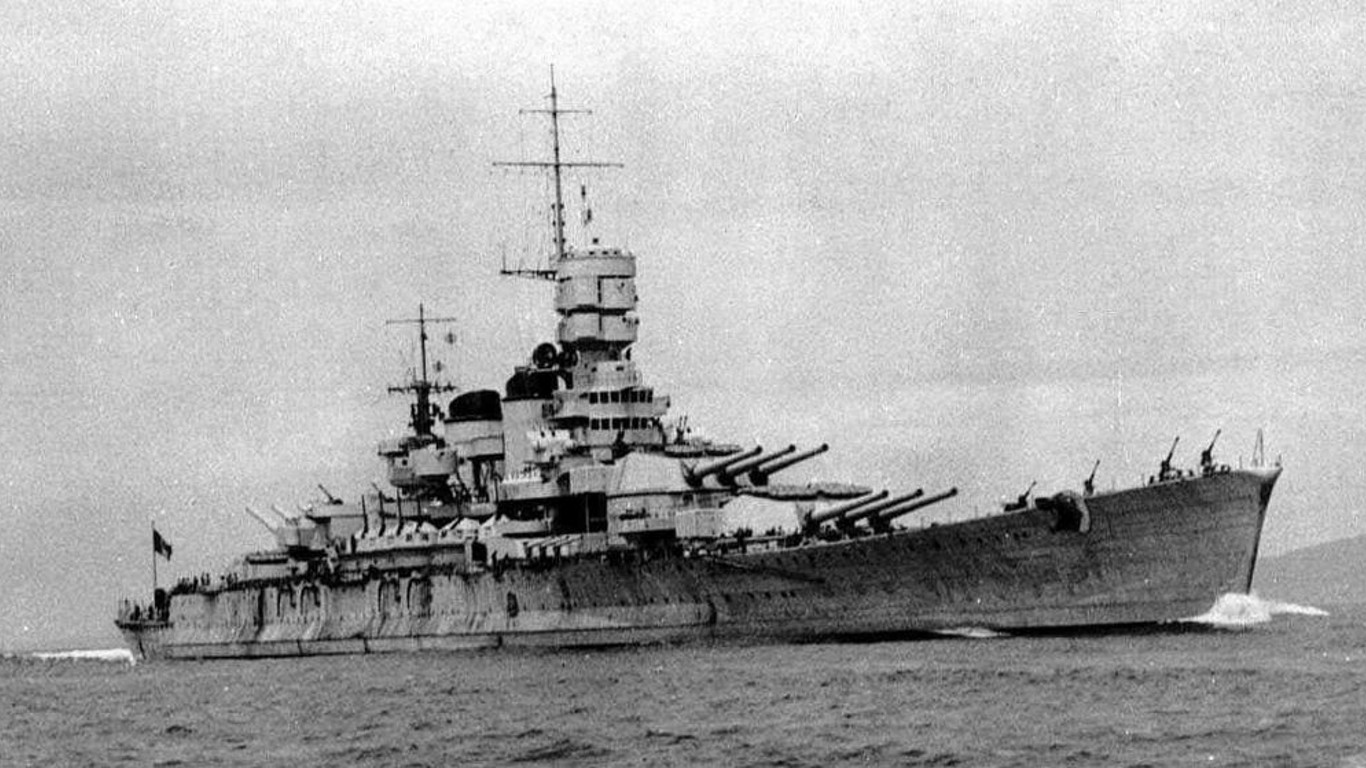
10. Littorio Class
> Tonnage: 45,485
> Country: Italy
> Commissioned: 1942
[in-text-ad-2]
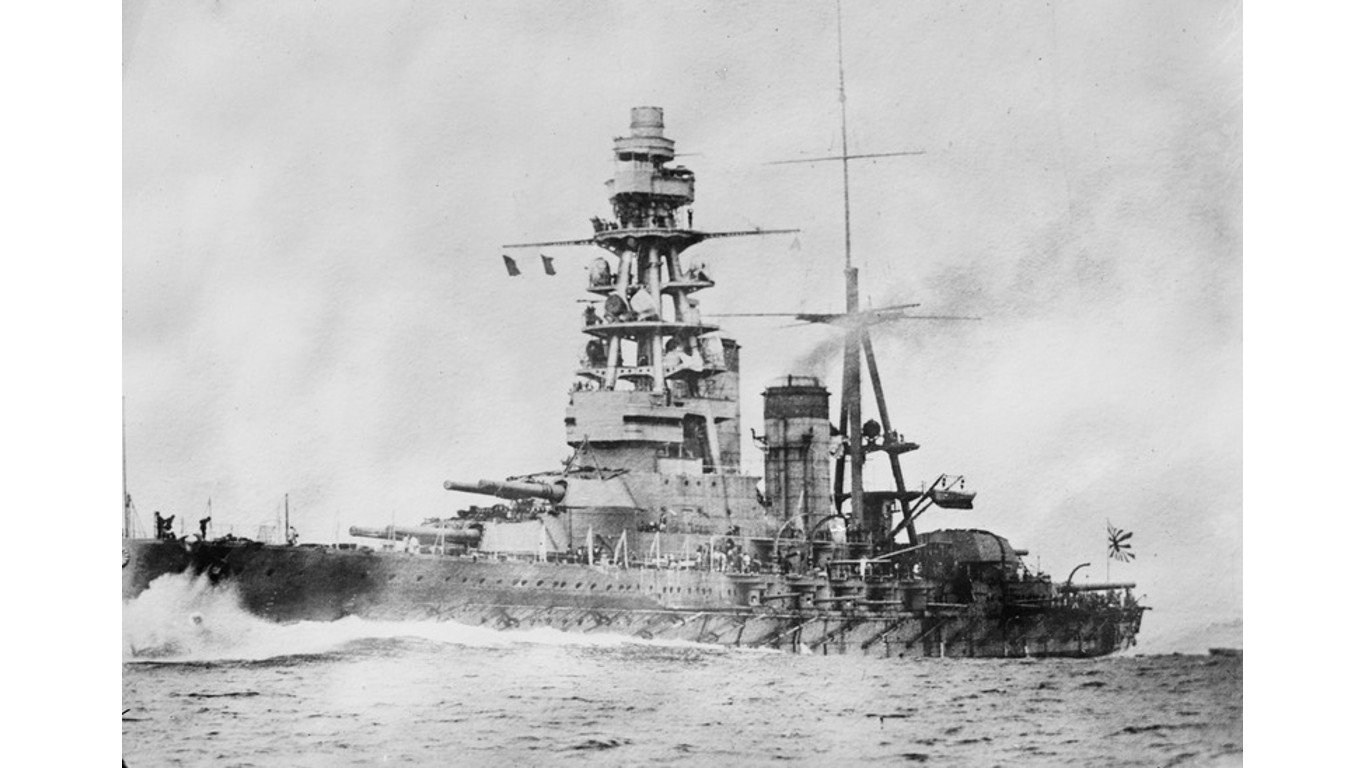
9. Nagato Class
> Tonnage: 45,950
> Country: Japan
> Commissioned: 1920
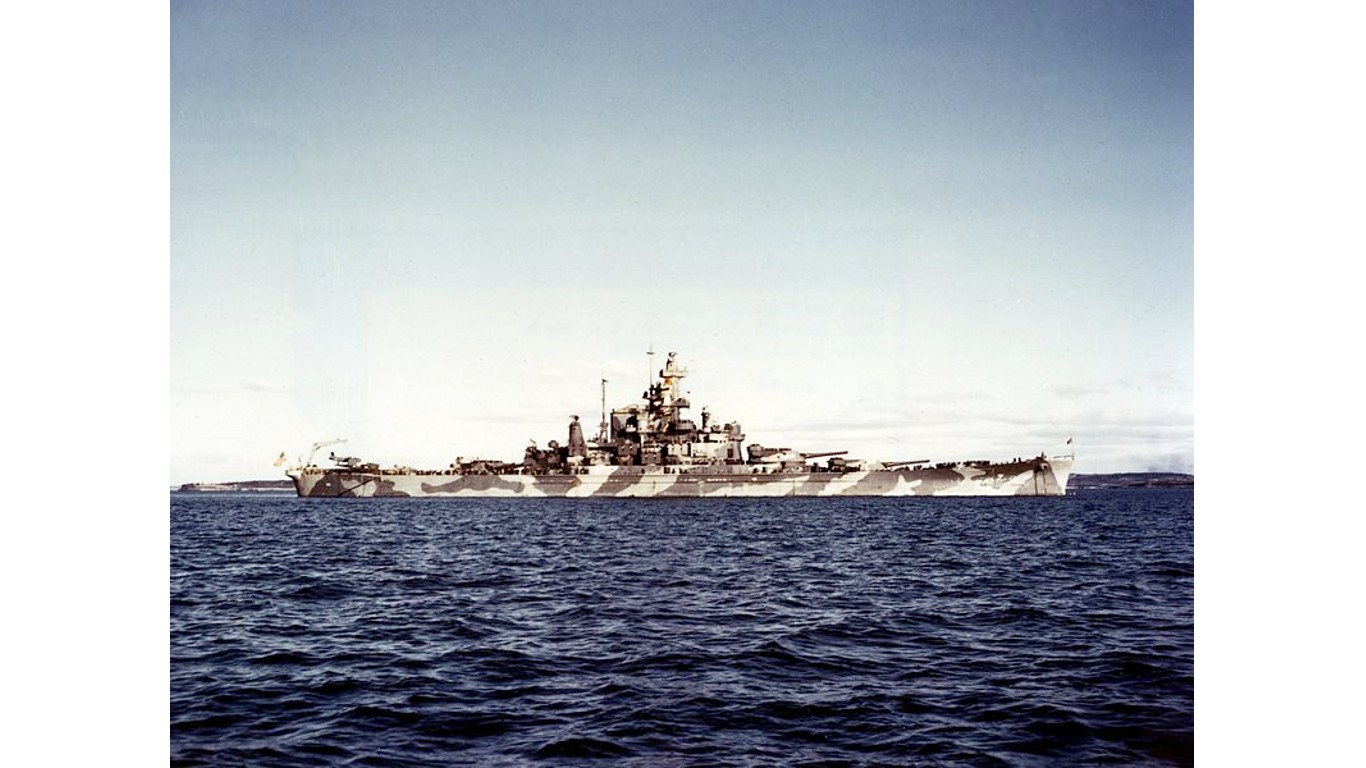
8. South Dakota Class
> Tonnage: 46,200
> Country: United States
> Commissioned: 1942
[in-text-ad]
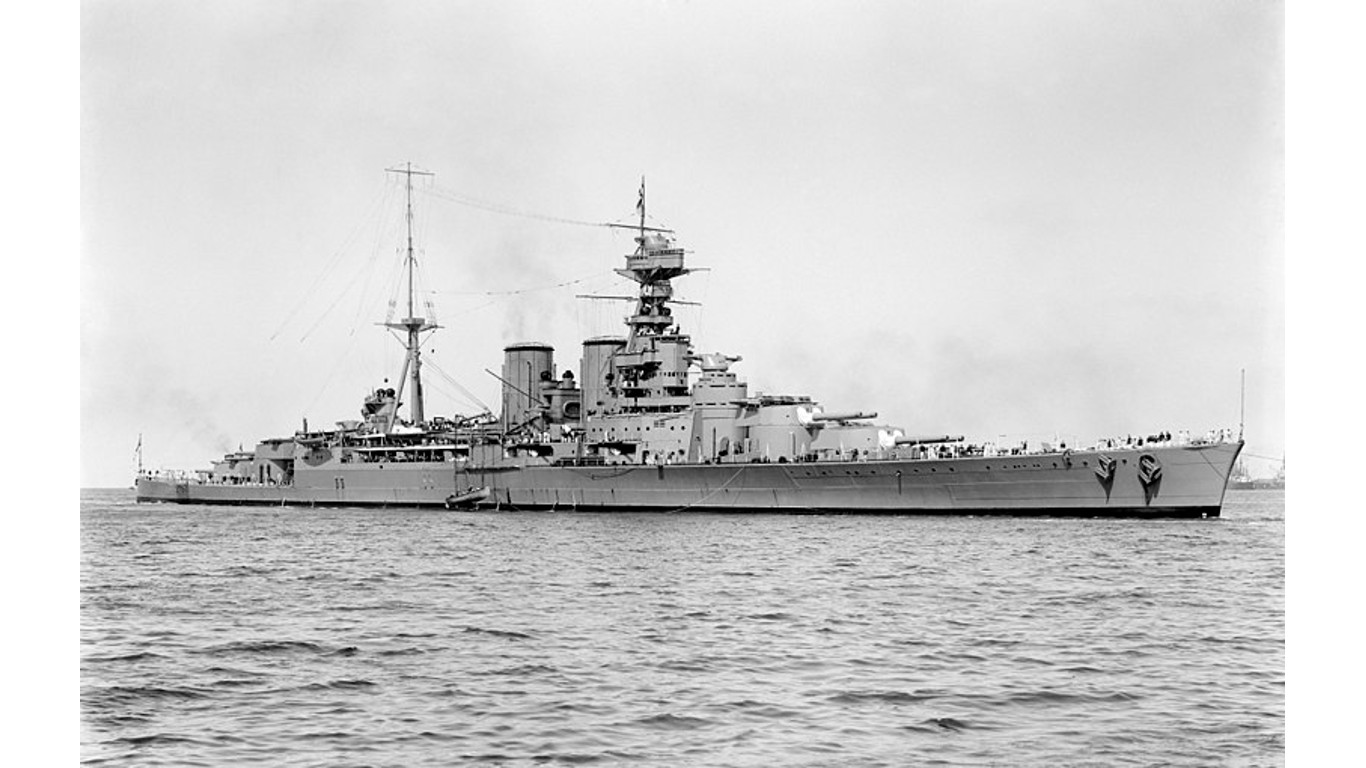
7. HMS Hood
> Tonnage: 46,680
> Country: United Kingdom
> Commissioned: 1920
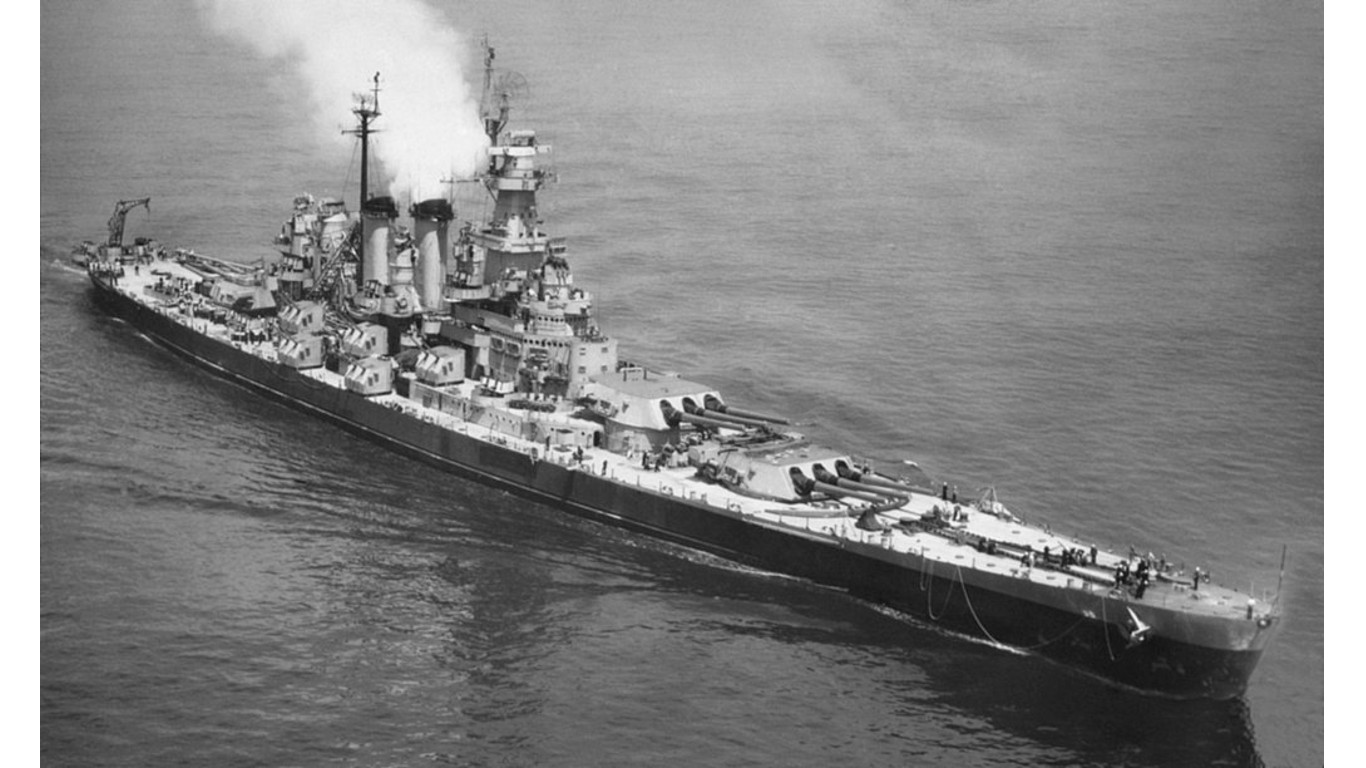
6. North Carolina Class
> Tonnage: 46,700
> Country: United States
> Commissioned: 1941
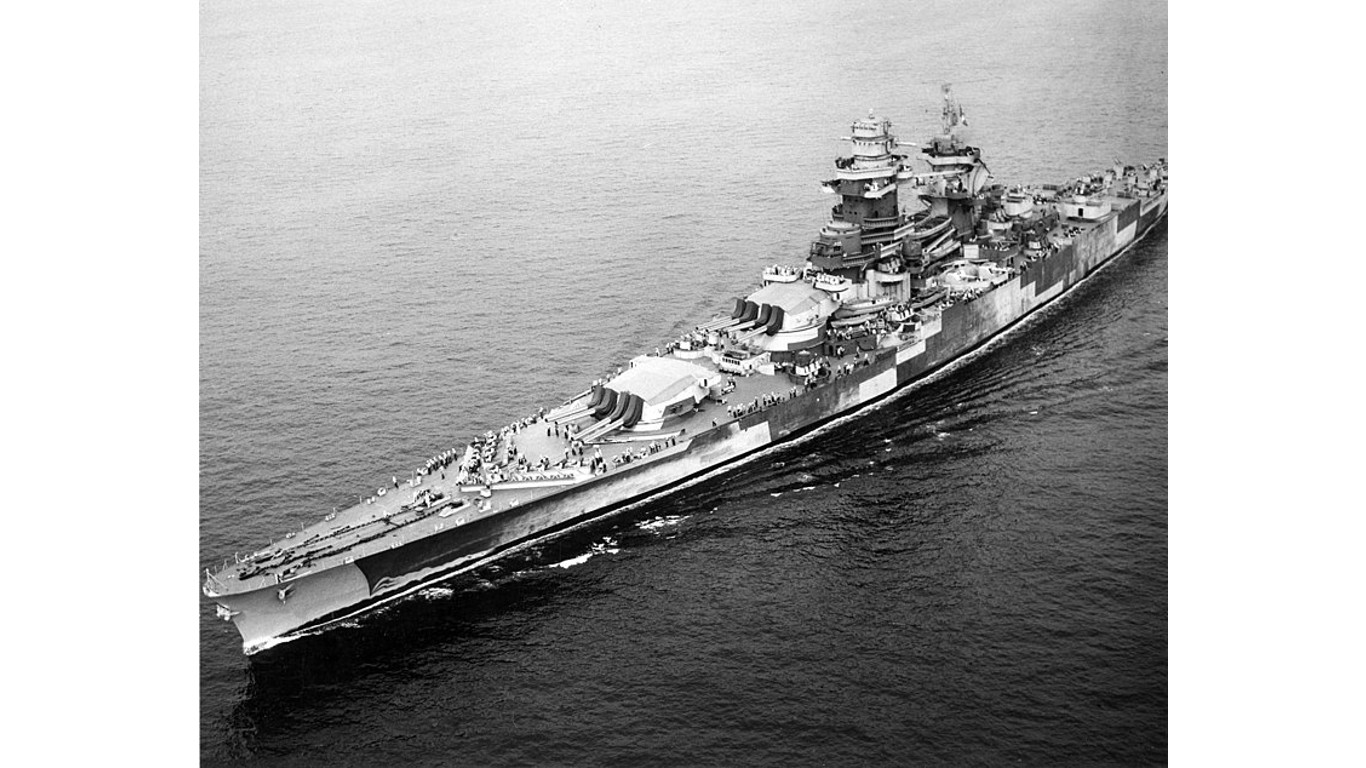
5. Richelieu Class
> Tonnage: 48,100
> Country: France
> Commissioned: 1940
[in-text-ad-2]

4. HMS Vanguard
> Tonnage: 51,420
> Country: United Kingdom
> Commissioned: 1946
3. Bismarck Class
> Tonnage: 51,800
> Country: Germany
> Commissioned: 1941
[in-text-ad]
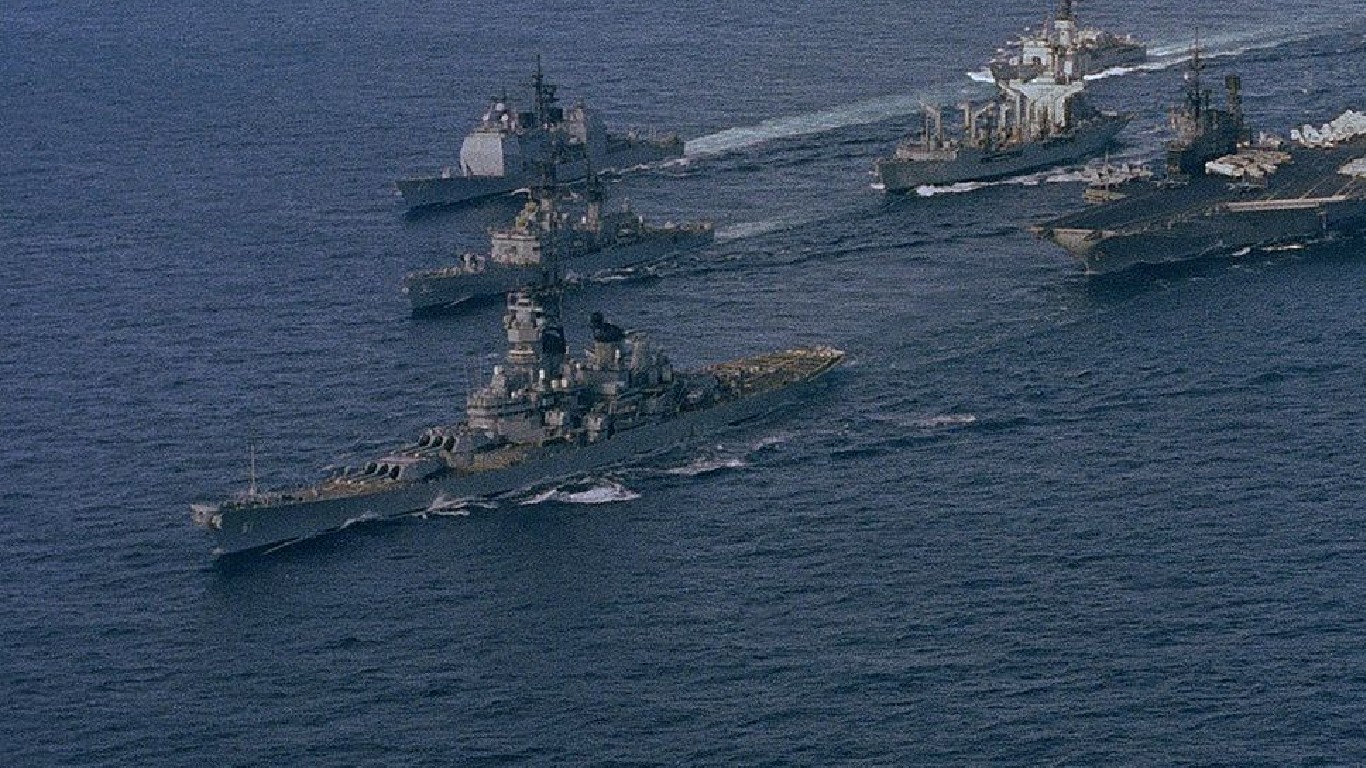
2. Iowa Class
> Tonnage: 57,540
> Country: United States
> Commissioned: 1943
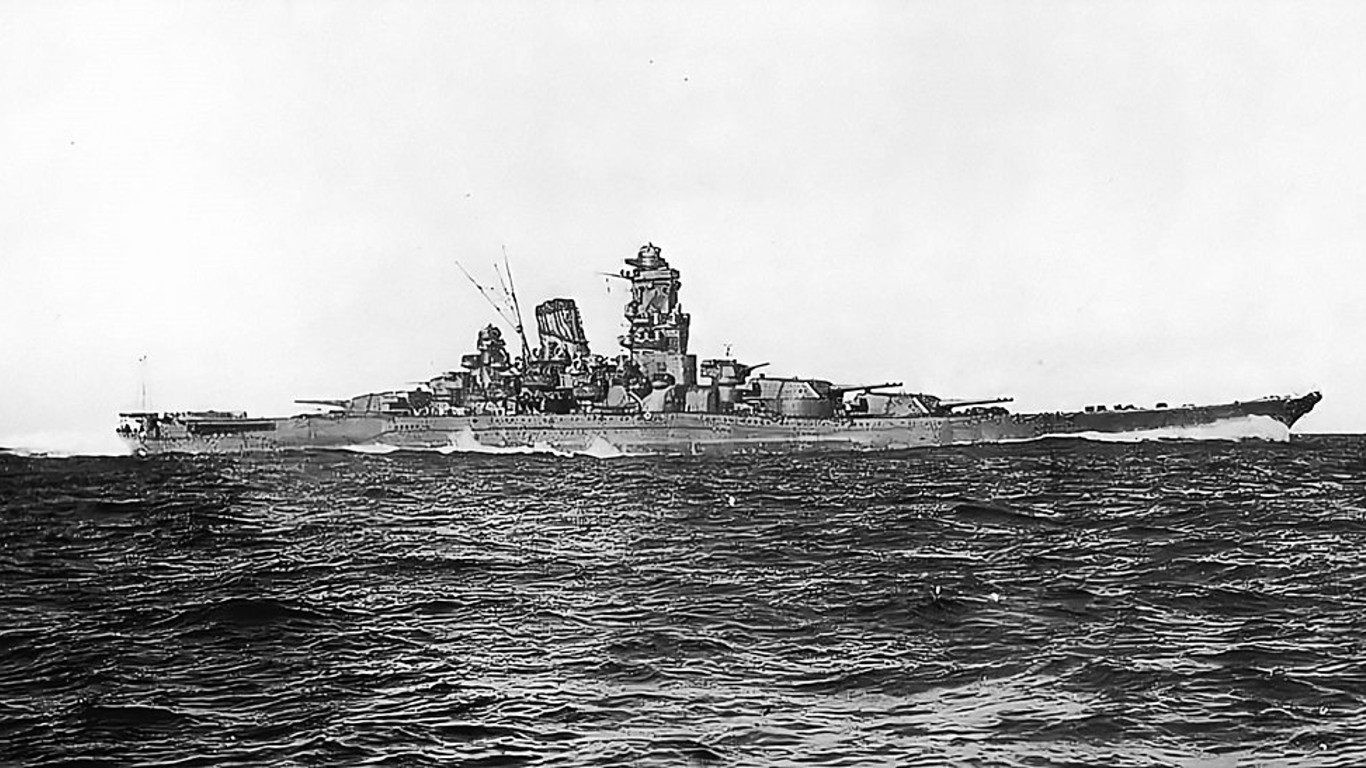
1. Yamato Class
> Tonnage: 71,659
> Country: Japan
> Commissioned: 1942
100 Million Americans Are Missing This Crucial Retirement Tool
The thought of burdening your family with a financial disaster is most Americans’ nightmare. However, recent studies show that over 100 million Americans still don’t have proper life insurance in the event they pass away.
Life insurance can bring peace of mind – ensuring your loved ones are safeguarded against unforeseen expenses and debts. With premiums often lower than expected and a variety of plans tailored to different life stages and health conditions, securing a policy is more accessible than ever.
A quick, no-obligation quote can provide valuable insight into what’s available and what might best suit your family’s needs. Life insurance is a simple step you can take today to help secure peace of mind for your loved ones tomorrow.
Click here to learn how to get a quote in just a few minutes.
Thank you for reading! Have some feedback for us?
Contact the 24/7 Wall St. editorial team.
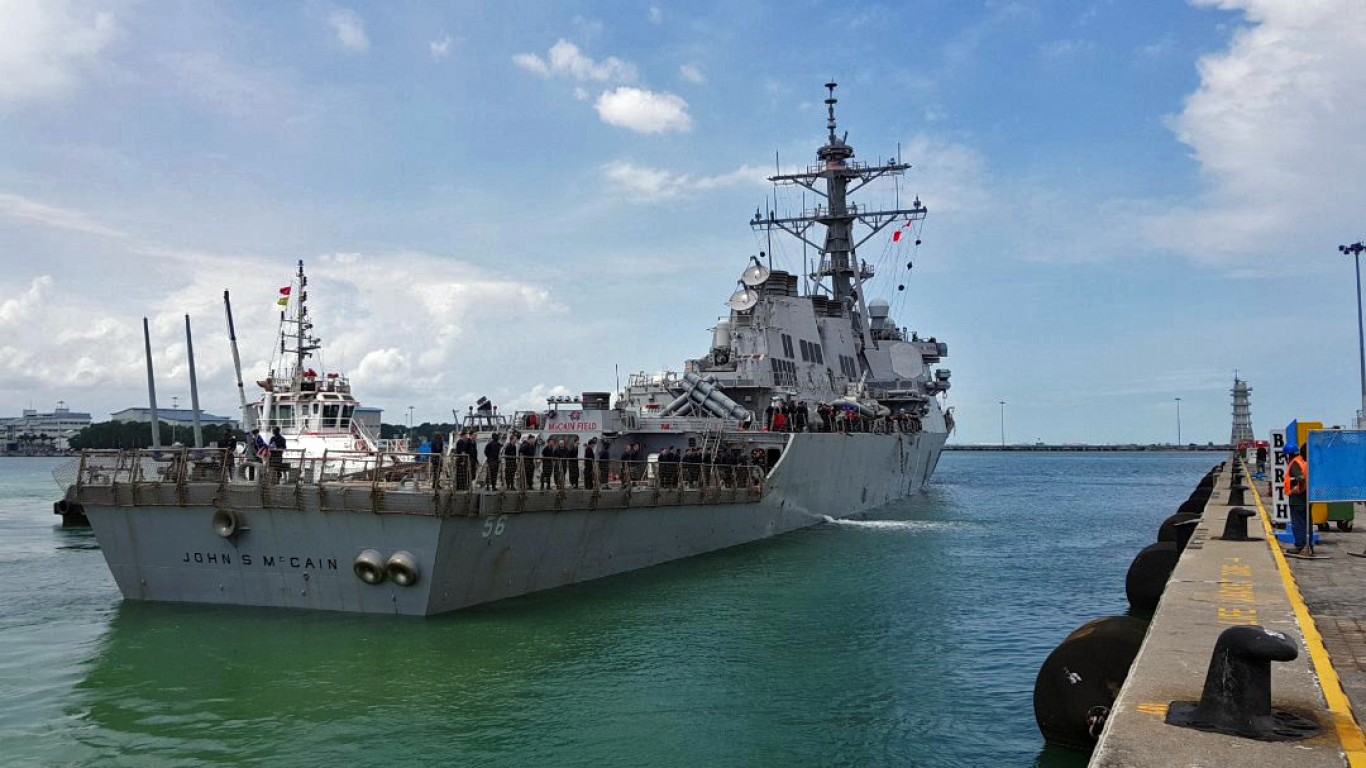 24/7 Wall St.
24/7 Wall St.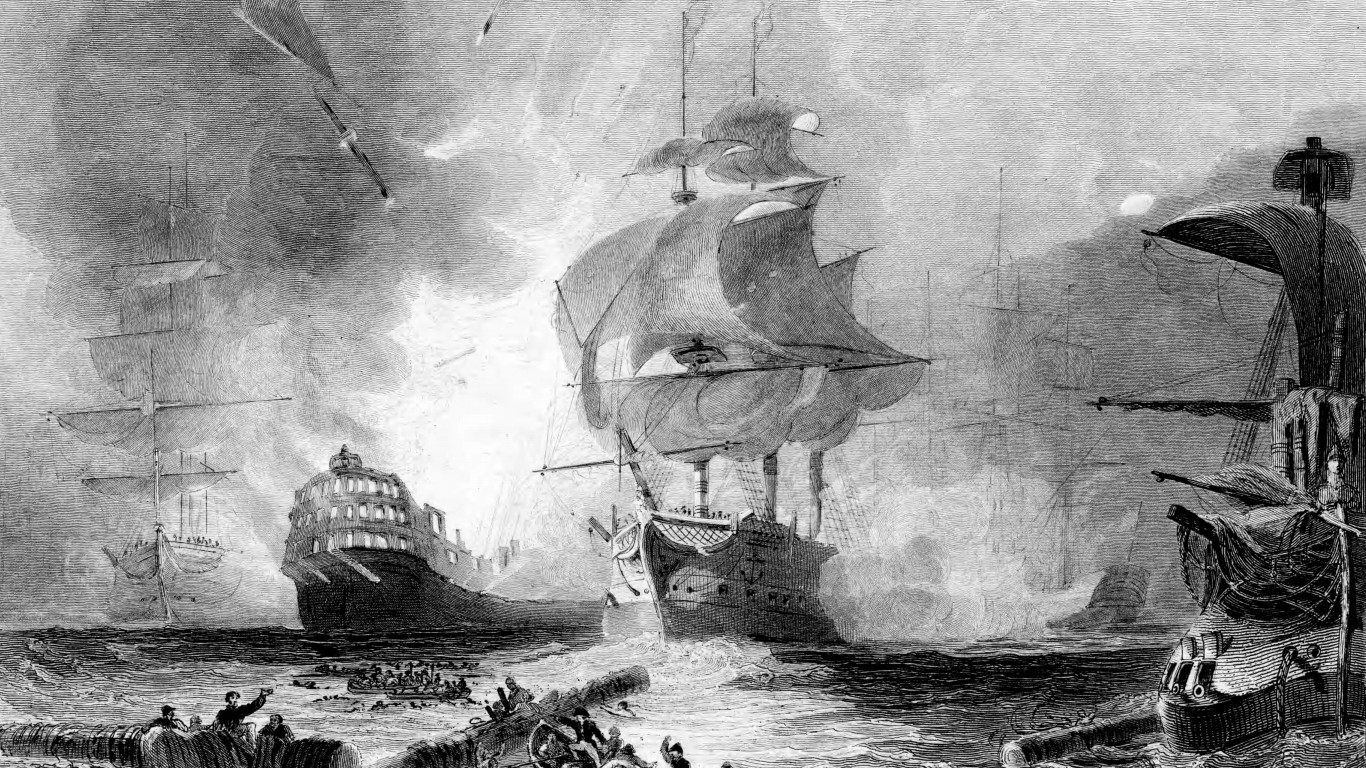 24/7 Wall St.
24/7 Wall St.